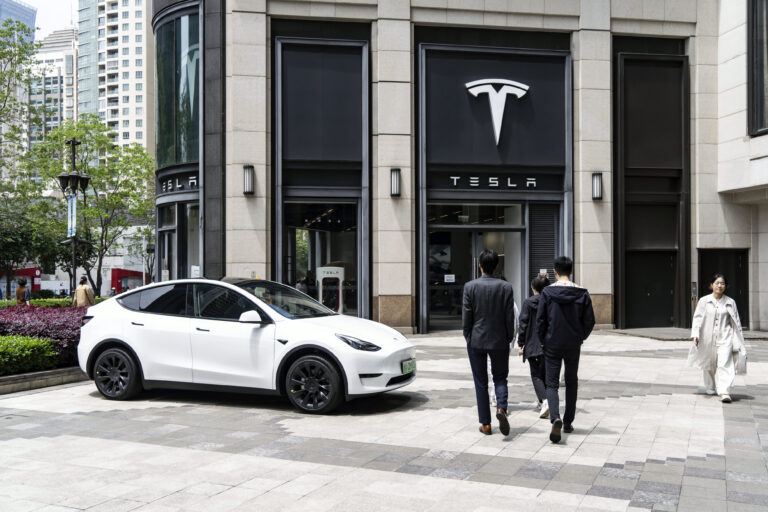Tesla’s sales in China fell 5.4 percent in the first half of this year, but the company remained third in new-energy vehicle sales after BYD and Geely, according to the China Passenger Car Association.
Bloomberg | Bloomberg | Getty Images
BEIJING — Tesla CEO Elon Musk again touted the upcoming rollout of its advanced driver-assistance software in China after reporting yet another disappointing quarterly financial result.
Since last year, driver-assistance features have become a selling point for cars in China’s crowded electric vehicle market. Tesla’s Autopilot for highway driving is available in China, but full self-driving, which uses cameras and artificial intelligence to automatically park, change lanes and slow down at stop signs, is not available.
“We plan to apply for regulatory approval of Tesla-administered FSDs in Europe, China and other countries in the near future, and I believe approval will likely be obtained by the end of the year,” Musk said during a second-quarter earnings conference call on Wednesday Beijing time, according to a transcript by FactSet.
Full Self-Driving is currently only available in the US and Canada. China accounts for about 22% of Tesla’s sales.
In April, Musk said in a response to X’s Q&A that a rollout to China “may be possible soon.”
About a week after the social media post, Musk made a surprise appearance in Beijing to meet with Chinese Premier Li Qiang at the country’s first major auto show in four years. Local authorities also lifted restrictions on Tesla vehicles after the company’s China-made vehicles met the country’s data security requirements.
Several companies are selling driver-assistance features in China, from tech giant Huawei to electric vehicle startup Xpeng, which expanded its driver-assistance software to the streets of Shanghai in March 2023, and later to Beijing.
“Tesla’s current FSD technology is somewhat behind what its competitors are offering in China,” said Shay Natarajan, North American partner at Mobility Impact Partners, a private equity fund that invests in the transportation sector.
“When comparing Tesla’s FSD to other Level 2 self-driving products from China, there are two big takeaways,” she says. “NIO is the leader in self-driving technology. Their sensor inputs include cameras, radar, LIDAR, and ultrasonic sensors, which are best of all worlds, resulting in an extremely high level of precision and redundancy in their ability to sense what’s around them.”
Natarajan noted that NIO charges about $55 per month for its driver-assist features, roughly half of what Tesla charges for FSD in the U.S.

